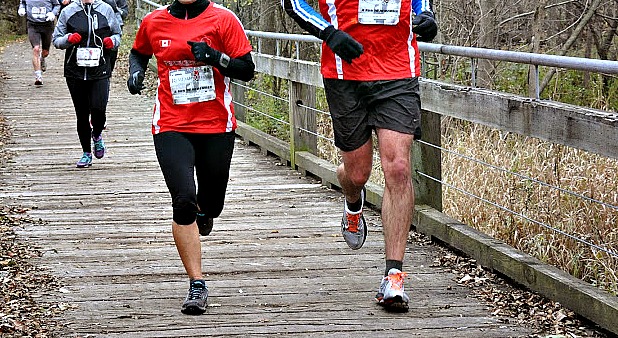When it comes to learning a new running technique, children pick it up better and faster than adults.

Adults may have a hard time learning forefoot running in the beginning, especially if they were heel striking for many years, simply because the older you get, the more your brain becomes “full” in a sense. Thus, creating new motor memories (i.e. learning forefoot running) relies in part on the destruction of old memories (i.e. learned habits of heel strike running).
Past studies have found that the adult brain has high levels of a protein that prevents such forgetting. This is the main reason many adults have a hard time adjusting to forefoot running after running for so many years with another running technique.
However, the more you practice forefoot running and at the same time forget the mechanics related to heel strike running, the memory of heel strike running fades. This is why its important for forefoot running learners to avoid reverting back to heel strike running during transition.
Some runners who transition to forefoot running decide to revert back to heel strike running during transition to give their calves a break. This however is counterproductive and keeps the memory of heel strike running alive, making learning forefoot running more challenging and longer to accomplish.
A study by Tsien et al. found that the older you are, the more your brain holds onto motor-connections more dearly, which is why switching from heel strike to forefoot running later in life may feel more laborious.
Thought Suppression and Substitution
Blocking out all thoughts related to heel strike running is a step in the right direction to learn forefoot running with greater ease.
- You must allow all heel strike running-related information to slip away in your mind -this is how the brain produces another protein that destroys the synapses encoding heel strike running.
- Try to forget by substituting the unwanted memories of heel strike running with more desired ones related to forefoot running.
Intentionally forgetting everything you learned as a heel strike runner is essential to installing new memories of forefoot running, helping you learn the technique better and faster.
More From Run Forefoot:
- Uphill Repeats Better than Speed Work on Level Ground
- Stretching Before Running Reduces Performance
- Common Running Injuries are Linked to Running Shoe Design
- Barefoot Essential to Running
- Forefoot Running Shoes by Merrell
References:
Chant, I.Forgetting is harder for older brains. In: Scientific American MIND, May/June, 2013. pp.8.
Tsien et al. Increased NR2A:NR2B ratio compresses long-term depression range and constrains long-term memory. Sci Rep, 2013;3:1036.
Bretta Riches
BSc Neurobiology; MSc Biomechanics candidate, ultra minimalist runner & founder of RunForefoot. I was a heel striker, always injured. I was inspired by the great Tirunesh Dibaba to try forefoot running. Now, I'm injury free. This is why I launched Run Forefoot, to advocate the health & performance benefits of forefoot running and to raise awareness on the dangers of heel striking, because the world needs to know.
Latest posts by Bretta Riches (see all)
- Are Minimalist Shoes Good for Seniors? YES! - 14/04/2024
- BIG Deals On Running Gear And More! - 09/04/2024
- Why Are My Feet Tired After Running? - 04/04/2024

Leave a Reply